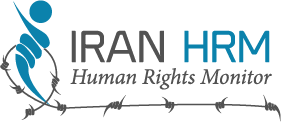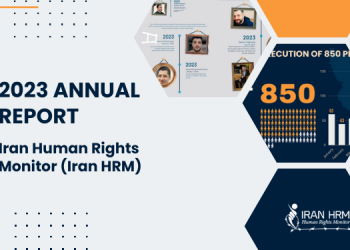Iran children are the most vulnerable under the mullahs since they neither protect nor promote the rights of children. On the World Children’s Day, here is a brief glance on the plight of children in Iran.
Poverty, hunger, child labor, child abuse, trafficking and sale of children and infants are among the hallmarks of Iranian children’s lives. Furthermore, the regime’s laws promote violation of children’s rights by sanctioning child labor, early marriages, honor killings, etc.
The Iranian regime is a signatory of the Convention on the Rights of the Child, but it does not take any action to safeguard and protect the rights and lives of children in Iran, particularly the girl children.
The child’s right to life and freedom from cruel punishment
Article 6 of the Convention on the Rights of the Child obliges all states parties to recognize that every child has the inherent right to life and ensure to the maximum extent possible the survival and development of the child.
The CRC stipulates that no child shall be deprived of his or her liberty unlawfully or arbitrarily. The arrest, detention or imprisonment of a child shall be in conformity with the law and shall be used only as a measure of last resort and for the shortest appropriate period of time. And that every child deprived of liberty shall be treated with humanity and respect for the inherent dignity of the human person, and in a manner which takes into account the needs of persons of his or her age. They shall have the right to prompt access to legal and other appropriate assistance.
The CRC also calls on States Parties to ensure that no child is subjected to torture or other cruel, inhuman or degrading treatment or punishment. Neither capital punishment nor life imprisonment without possibility of release shall be imposed for offences committed by persons below eighteen years of age.
This is not the case in Iran where children are arrested, tortured, and sentenced to death without having access to a lawyer.
At least 29 juveniles were among those killed in the streets during the November 2019 uprising across Iran. Many more injured young protesters were snatched from hospitals and imprisoned under inhuman conditions and tortured to make false confessions against themselves. They were not provided medical treatment for their injuries as a way of further physical torture.
The Iranian regime is the world top executioner of minors.
Iran’s Coroner’s Office published statistics in 2017 indicating that 7 per cent of the suicides were committed by children under the age of 18. The numbers are expected to have increased since especially after the Covid-19 pandemic.
In October 2020, dozens of teenagers committed suicide for not having adequate access to online classes to continue their education.
Poverty is also a significant contributor to deaths and social ills among children in Iran.
Substandard structures of schools and unsafe transportation also victimize a considerable number of children every year. Every year, many young boys and girls lose their lives in road accidents, or under a collapsed wall or ceiling at school. Unsafe heating systems have also caused fire and repeated poisoning of students.
In the absence of piped water in the impoverished Sistan and Baluchestan Province, dozens of children lose their lives every year while trying to drink water from Hootags. Many get drowned and more lose their arms to crocodiles.
Hootags are natural or man-made holes which collect rainwater for use by both humans and animals.
Iranian laws, the major source of violation of children’s rights
The Iranian legislations and Constitution are the main source of violation of the rights of children in Iran.
According to the Constitution girl children who are 9 years and older are legally held accountable for committing crimes. They also have to observe the mandatory dress code and cover their hair since the first day of school at age 6.
The legal age of marriage for girls is set at 13. The Legal and Judicial Committee of the mullahs’ parliament rejected the proposal to increase girls’ marriage age in December 2018 for contradicting the teachings of Islam.
In June 2020, the Bill to Protect the Rights of Children was hastily adopted after 11 years of foot-dragging to quell the public outrage over the beheading murder of 14-year-old Romina Ashrafi by her father. The bill, however, fails to protect the rights of the girl children.
The Children’s Rights Bill does not address any of the policies or laws that are currently in force and violate children’s rights, including their right to freedom from child labor, forced marriage, marriage under 18 years old, and accountability at 9 years of age.
Article 1179 of the Iranian Civil Code sanctions physical abuse of children by their parents, if they did not exceed conventional limits.
The bill does not include any provision to support the living conditions and education of children in low-income families.
Education is not free nor compulsory
The CRC obliges State Parties to recognize the right of the child to education based on equal opportunity. They shall make primary education compulsory and available free to all. They shall encourage the development of different forms of secondary education, including general and vocational education, make them available and accessible to every child, and take appropriate measures such as the introduction of free education and offering financial assistance in case of need. They should also take measures to encourage regular attendance at schools and the reduction of drop-out rates.
Education is neither compulsory nor free in Iran. Since more than 80 percent of the population live under the poverty line, too many families do not afford to send their children to school. Many children in Iran go to sub-standard schools without minimum equipment and sanitation.
Child participation in the family’s economic activities, seasonal immigrations, and lacking registered birth certificates, are among other reasons Iranian children are deprived of going to school.
There were approximately 15 million school-age children in Iran as of 2018. An estimated 2 to 4 million children were left out of school. The number of these children increased by yet another 3.5 million after the outbreak of the Coronavirus, as admitted by the Head of the Health Commission of the mullahs’ parliament. He asserted on October 14, 2020, that “3.5 million students in Iran do not have access to smartphones or tablets.”
Child labor rampant in Iran
According to Article 32 of the Convention on the Rights of the Child, States Parties must recognize the right of the child to be protected from economic exploitation and from performing any work that is likely to be hazardous or to interfere with the child’s education, or to be harmful to the child’s health or physical, mental, spiritual, moral or social development.
The legal age of work for children in Iran is 15. Meanwhile, the government has no supervision over the enforcement of this law and many children are deployed for long hours and very low pay at younger age.
Over 7 million Iranian children work to earn a living, many sift through garbage and are exposed to various hazards. They are forced to work to help their families earn enough to survive.
A Tehran NGO had identified some 4,700 children who scavenge through garbage in the capital. (The semi-official Etemadonline.ir, April 15, 2020)
An expert on child labor acknowledged that the official statistics are not reliable. He said the situation and numbers of child laborers were catastrophic especially in Sistan and Baluchestan and Razavi Khorasan provinces in eastern Iran. Older estimates from 2017 put the number of working children in Iran between 3 and 7 million. (The semi-official salamatnews.com, September 17, 2017)
Child laborers are exposed to sexual exploitation and abuse in violation of CRC Article 34, and unofficial statistics on prostitution indicate the age of prostitution in Iran having dropped to 12. They are also victims of drug addiction and drug trafficking in violation of CRC Article 33.
Victims of drug trafficking and prostitution
Homeless children who have no parents or guardians fall victim to the drug-trafficking mafia. Iranian regime has not taken any action to prevent the use of children in the illicit production and trafficking of narcotic drugs, while the Revolutionary Guard Corps (IRGC) is the state entity that runs this business and makes enormous wealth.
The average age of drug addiction in Iran was under 13 among girls as of September 4, 2015, reported the semi-official ISNA news agency. Again, the figure is expected to have dropped lower due to widespread poverty and consequent addiction over the past six years.
The problems of Iran children does not stop there. The rampant sale of infants and trafficking of children in Iran violates CRC Article 11. Many children do not birth certificates and identity papers in violation of Article 7 because being born from an alien father or out of marriage. As a result of which they cannot go to school.
Children of ethnic minorities are deprived of learning their mother tongue in violation of Article 30 of the Convention on the Rights of the Child. Teachers, like Zahra Mohammadi, who teach children their mother tongue are arrested by the regime, tortured and sentenced to long prison sentences.
All in all, Iran children in Iran are the most innocent victims of the clerical regime. They are the poorest, the hungriest and the most oppressed sector of Iranian society. They have no rights and their conditions over the past four decades, amount to organized crime by the mullahs’ religious dictatorship.











